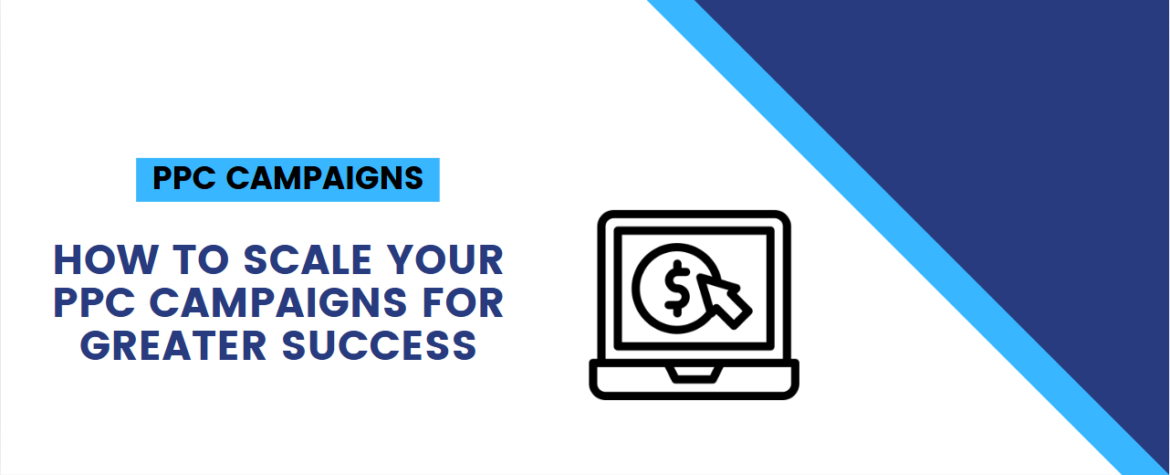Running a successful Pay-Per-Click (PPC) campaign can feel like a delicate balancing act. You want to drive traffic, maximize conversions, and make sure you’re getting the best return on investment (ROI) possible. But once you’ve reached a point where you’re seeing solid results, you might start wondering: how can I scale this to achieve even greater success?
Scaling your PPC campaigns effectively requires a combination of strategy, data-driven decisions, and ongoing optimization. The goal is not just to throw more money at your campaigns but to make smart moves that will lead to sustained growth. In this guide, we’ll explore how to scale your PPC campaigns to new heights while maintaining efficiency and effectiveness.
1. Start with a Solid Foundation
Before you start scaling, ensure that your PPC campaigns are already running well on a smaller scale. This might seem obvious, but it’s crucial to start with the basics before trying to expand.
Check Your Metrics
Make sure your conversion rate and cost-per-conversion are at a level that justifies the scale. Scaling a campaign that isn’t performing well won’t bring in better results—it will just waste more budget.
If you’ve already achieved a positive ROI with your campaigns, scaling is the next logical step. To evaluate performance, make sure you’re focusing on these key metrics:
- Click-Through Rate (CTR): How often people click your ad compared to how many see it.
- Conversion Rate: How many clicks turn into actual sales, leads, or other actions.
- Cost per Conversion: How much you’re paying for each successful conversion.
Optimize Campaigns First
Make sure that you’re constantly optimizing your keywords, targeting, ad copy, and landing pages before scaling. Scaling a poorly optimized campaign will only amplify inefficiencies and unnecessary costs. Take time to fine-tune:
- Keyword targeting: Focus on high-converting keywords.
- Ad copy: Test different versions to see which performs the best.
- Landing pages: Make sure your landing pages are fast, relevant, and have a clear call to action (CTA).
Stats: According to WordStream, businesses that actively optimize their PPC campaigns see up to 50% more ROI than those who don’t optimize regularly.
2. Increase Your Budget Gradually
Once your campaign is optimized and performing well, the next step is scaling your budget. However, you don’t want to make a huge budget increase all at once. Instead, increase your budget gradually—by about 10-20% per week.
By doing so, you allow the system to adjust to the new budget without overwhelming your account’s learning phase, which can lead to wasted spend or unstable performance.
Why Gradual Scaling Works
Google Ads and other PPC platforms rely on algorithms that learn from your campaign’s data. A sudden, large budget increase can confuse the system, causing a drop in performance. A gradual increase helps the algorithm better understand where to allocate your budget and optimizes performance without disrupting your campaigns.
3. Expand to New Keywords and Audiences
Once you’ve fine-tuned your initial campaign and increased your budget, it’s time to expand.
Expand Keywords
Start adding new high-performing keywords to your campaigns. You can do this by:
- Using keyword research tools like Google’s Keyword Planner, SEMrush, or Ahrefs.
- Analyzing competitors’ ads to uncover new keyword opportunities.
- Looking at your search term report to see which queries are already bringing traffic and conversions.
Don’t just throw in any keywords; focus on keywords that are closely related to your business and customer intent.
Test New Audiences
Another way to scale is to expand your audience targeting. If you’ve been targeting a specific set of demographics, consider expanding to other relevant groups. Look into targeting:
- Similar audiences: People who share behaviors or characteristics with your current customers.
- Geographical expansion: If you’re doing well in one location, try expanding to new regions or countries.
- Device targeting: Experiment with targeting specific devices, especially mobile if your website is mobile-friendly.
Stats: According to Google, advertisers who expand to more targeted audiences can see a 30-50% increase in conversions.
4. Leverage Automation and Smart Bidding
As you scale, managing all aspects of your campaigns manually becomes more time-consuming. One of the easiest ways to scale without increasing the workload is by leveraging automation and smart bidding strategies.
Smart Bidding Strategies
Google Ads offers several smart bidding strategies that use machine learning to optimize your bids based on user behavior and conversion likelihood. Some popular options include:
- Target CPA (Cost Per Acquisition): Set a target cost per conversion, and Google automatically adjusts your bids to help you reach that target.
- Target ROAS (Return on Ad Spend): Focus on getting a specific return on your investment. Google adjusts bids to maximize the revenue generated.
- Maximize Conversions: Let Google automatically adjust your bids to get the highest number of conversions within your budget.
These bidding strategies help you scale efficiently without manually tweaking your bids for each individual keyword.
Automated Rules
You can also use automated rules to make adjustments to your campaigns without having to do everything by hand. For instance, you can set rules for pausing underperforming ads, adjusting bids based on performance, or even changing budget allocations across campaigns.
5. Expand to New Ad Platforms
While Google Ads is the most popular PPC platform, it’s not the only one. Expanding to other advertising platforms can open up new traffic sources and help scale your campaigns further.
Some platforms to consider are:
- Bing Ads: While it has a smaller audience compared to Google, Bing Ads can still be a valuable source of traffic, particularly for older demographics.
- Facebook Ads: Facebook’s advanced targeting features make it a great platform for reaching potential customers based on their interests, behaviors, and demographics.
- LinkedIn Ads: If you’re in the B2B space, LinkedIn Ads can be incredibly powerful for targeting professionals in specific industries or job roles.
- Instagram and TikTok Ads: If you’re targeting younger audiences, Instagram and TikTok can be great ways to scale.
Each platform has its own unique features, and scaling across multiple platforms can help diversify your traffic sources, which reduces the risk of relying too heavily on one platform.
Stats: According to HubSpot, advertisers who use at least 3 ad platforms see up to 30% more conversions than those using a single platform.
6. Refine Your Landing Pages for Better Conversion Rates
Scaling your PPC campaigns isn’t just about getting more traffic—it’s about making sure that traffic converts. As you scale your campaigns, be sure to focus on improving your landing pages to match the increased volume of visitors.
A/B Testing
Use A/B testing to test different landing page designs, headlines, CTAs, and other elements. Small changes can make a big difference in improving your conversion rate. For instance, changing your CTA from “Learn More” to “Get Started Now” could lead to a higher conversion rate.
Speed and Mobile Optimization
Don’t forget that page load speed is a critical factor in user experience and conversions. If your landing page takes too long to load, visitors will leave. Make sure your landing pages are mobile-friendly, as more people now browse and shop on mobile devices than ever before.
7. Monitor, Optimize, and Scale Further
As you scale, it’s important to constantly monitor your campaigns and make adjustments. Scaling isn’t a one-time task—it’s an ongoing process of refinement.
- Track performance regularly: Use tools like Google Analytics and Google Ads reports to check how your campaigns are performing.
- Refine your targeting: Continuously monitor the performance of your keywords and audience segments, and remove underperforming elements.
- Focus on high-performing ads: Once you have enough data, focus your budget on ads and keywords that bring in the highest conversions, and pause those that don’t.
Conclusion
Scaling your PPC campaigns for greater success is an exciting challenge that involves a combination of optimizing existing efforts, expanding your reach, automating where possible, and constantly testing and refining. By following these steps—starting with a solid foundation, gradually increasing your budget, expanding keywords and audiences, leveraging automation, and optimizing your landing pages—you can set your campaigns up for sustainable growth.
Remember, scaling isn’t just about increasing your spend; it’s about making smarter, data-driven decisions that lead to higher ROI. Keep monitoring, stay flexible, and continue learning as you grow your PPC campaigns. The right strategies will help you achieve not just more traffic, but more conversions and profits as well.


